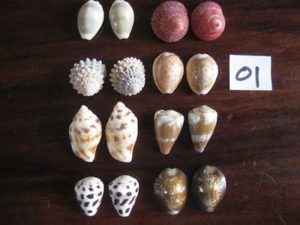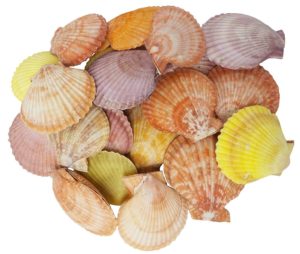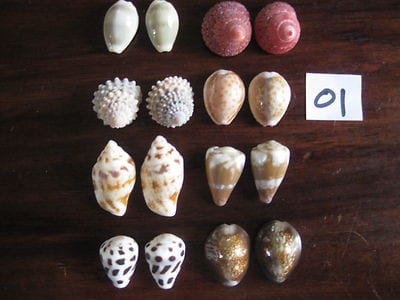Student Contributor: A. Mayfield
 Shells for grouping is used as an easy tool for assembling groups by matching shell types or colors. This makes the grouping more random and helps to ensure that nobody gets left out.
Shells for grouping is used as an easy tool for assembling groups by matching shell types or colors. This makes the grouping more random and helps to ensure that nobody gets left out.
To encourage inclusion, this grouping system should be used before breaking people up into groups. It’s important to make sure that every shell meets at least one match to create a pair or even a triad. Growing up, the grouping options were either pick a partner or you were assigned one, we never had techniques like this. I imagine this is a great tool to use to keep everyone involved and make sure that students get to interact with a variety of peers. I would suggest having different types as well as different colors of shells to give multiple ways of grouping within one tool.
 This tool relates most to the supportive phase because it is a grouping tool used during the task. It’s not quite a preventative tool, but it can be preventative in the sense that when using this to support classroom discussion you are preventing other students from being left out or picking favorites. As for the corrective phase, if this hadn’t been used previously then it could correct problems with grouping, like mixing kids up and providing students the opportunity to work with new people.
This tool relates most to the supportive phase because it is a grouping tool used during the task. It’s not quite a preventative tool, but it can be preventative in the sense that when using this to support classroom discussion you are preventing other students from being left out or picking favorites. As for the corrective phase, if this hadn’t been used previously then it could correct problems with grouping, like mixing kids up and providing students the opportunity to work with new people.
Shells for Grouping fits with the theory that is both collaborative and teacher directed. I believe that this tool is more on the teacher directed side of collaborative rather than the student side because the teacher lays out the way students will be grouped, even though it is slightly random. Students get to choose their shell of course but the way they are grouped is decided by the teacher. This makes it collaborative, but more teacher directed than student directed.
More Information –
Tool Source: G.Nollmeyer


